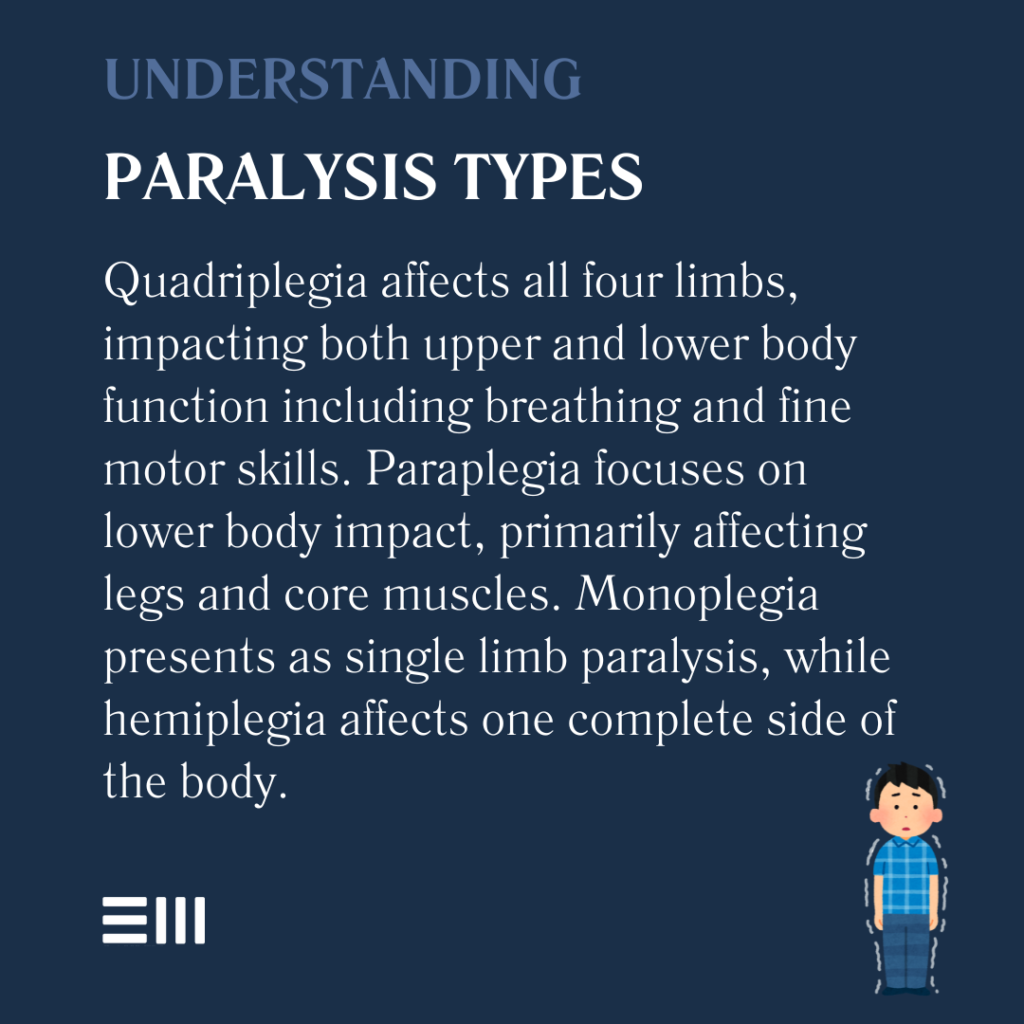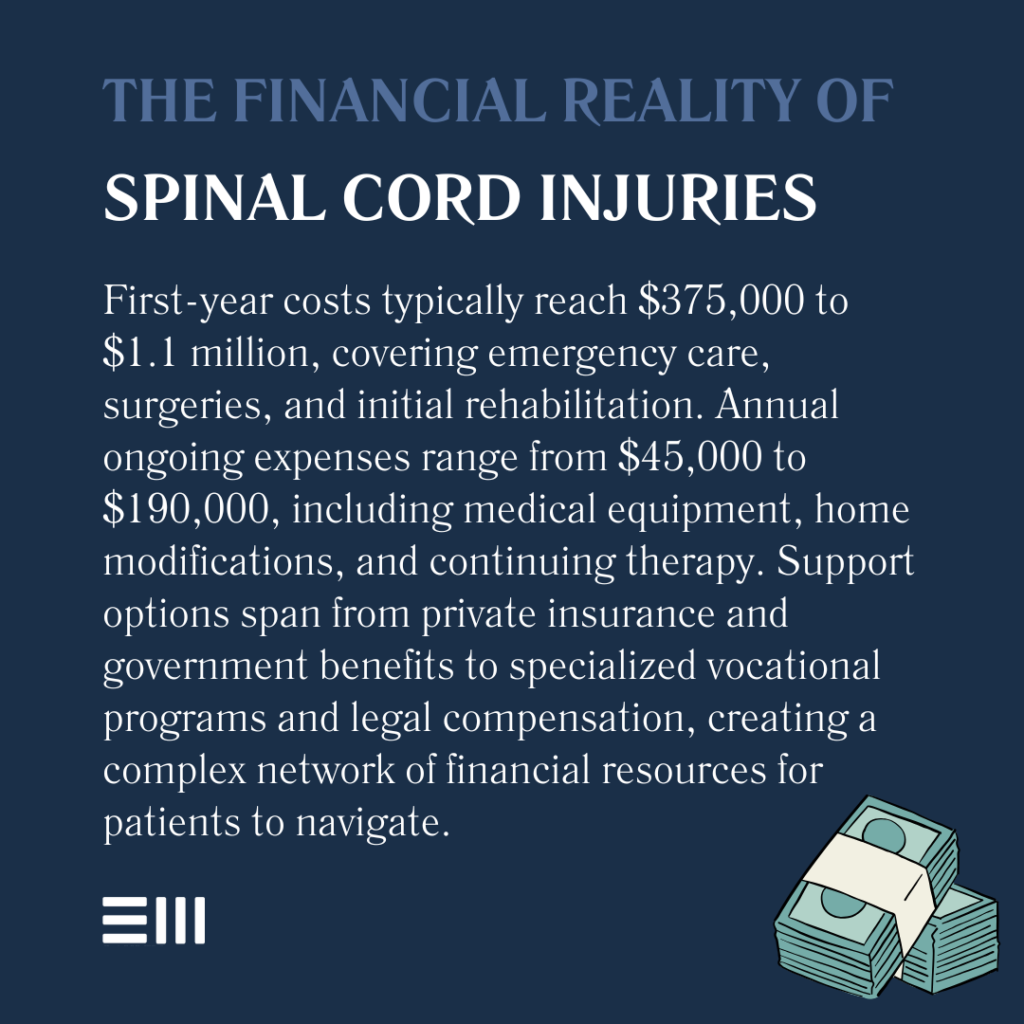
Every 43 minutes, someone in the United States suffers a spinal cord injury, fundamentally changing their life in an instant.
For the nearly 18,000 Americans who experience these injuries annually, the path forward often seems uncertain and overwhelming.
In Alabama alone, hundreds of families face the life-altering impact of spinal cord injuries each year, navigating complex medical, financial, and personal challenges.
Understanding Spinal Cord Injuries
The complexity of spinal cord injuries extends far beyond the initial trauma. Each vertebra and nerve bundle plays a vital role in our daily functions, from breathing to basic movement.
When these delicate systems are damaged, the effects ripple through every aspect of a person’s life, requiring comprehensive medical intervention and long-term support.
- Complete vs. incomplete injuries – determining function retention;
- Cervical injuries affecting the neck and upper body;
- Thoracic injuries impacting the chest and abdomen;
- Lumbar injuries affecting the lower back and legs;
- Central cord syndrome;
- Brown-Séquard syndrome;
- Anterior cord syndrome;
- Varying degrees of paralysis severity;
- Secondary complications and long-term effects; and
- Neurological impact assessment.
Understanding these distinctions helps create a clearer picture of recovery possibilities and necessary medical interventions, allowing for more targeted treatment approaches and realistic recovery expectations.
Types of Paralysis and Their Impact
Different injury locations result in distinct types of paralysis, each presenting unique challenges and requiring specialized care approaches.
Understanding these variations helps in developing effective treatment strategies and support systems.
Quadriplegia (tetraplegia):
- Complete loss of function in all limbs;
- Respiratory system complications;
- Need for comprehensive care assistance; and
- Impact on fine motor skills.
- Lower body function loss;
- Bladder and bowel control issues;
- Mobility challenges; and
- Independence maintenance strategies.
- Single limb affect;
- Rehabilitation potential;
- Adaptive equipment needs; and
- Compensatory techniques.
- One-sided body affects;
- Balance challenges;
- Coordination difficulties; and
- Specialized therapy requirements.
These conditions require different treatment strategies and rehabilitation approaches, tailored to each patient’s specific needs and circumstances.

Common Causes in Alabama
Alabama’s unique mix of urban and rural environments contributes to specific patterns in spinal cord injury causes. Understanding these patterns helps in prevention and immediate response strategies.
Motor vehicle accidents:
- Highway collisions on I-65 and I-85;
- Rural road incidents;
- Commercial truck accidents; and
- Motorcycle crashes.
Workplace injuries:
- Manufacturing plant incidents;
- Construction site accidents;
- Agricultural equipment accidents; and
- Industrial facility injuries.
Sports and recreational accidents:
- Diving injuries;
- Contact sport impacts;
- Horseback riding incidents; and
- Hunting-related falls.
Falls:
- Construction site falls;
- Elderly care facility incidents;
- Home maintenance accidents; and
- Workplace elevation falls.
Medical malpractice incidents:
- Surgical complications;
- Anesthesia errors;
- Delayed diagnosis impact; and
- Treatment complications.
Each cause requires different preventive measures and legal considerations for victims seeking compensation and justice.
Medical Care and Recovery Timeline
Recovery from spinal cord injuries follows a complex path, with each phase requiring specific medical interventions and support systems.
Understanding this timeline helps patients and families prepare for the journey ahead.
Initial Emergency Care:
- Immediate spinal immobilization;
- Emergency room trauma response;
- Surgical intervention assessment;
- Respiratory support when needed;
- Prevention of secondary injury;
- Initial rehabilitation planning; and
- Family support coordination.
Acute Care Phase:
- Specialized trauma care;
- Surgical procedures;
- Infection prevention;
- Pain management;
- Early mobility interventions;
- Psychological support initiation; and
- Family education and training.
Rehabilitation Phase:
- Comprehensive physical therapy;
- Occupational therapy programs;
- Speech therapy when needed;
- Psychological counseling;
- Adaptive equipment training;
- Family caregiver training; and
- Independence skill development.
Long-term Care Management:
- Home modification planning;
- Ongoing medical monitoring;
- Regular therapy assessment;
- Equipment maintenance;
- Complication prevention;
- Wellness program participation; and
- Support group integration.
Each stage requires careful coordination between healthcare providers, family members, and support services to ensure optimal outcomes.
Financial Impact and Support Options
The lifetime costs of spinal cord injuries can reach millions of dollars, making financial planning crucial for long-term care.
Understanding available resources helps families navigate this challenging aspect of recovery.
Medical Cost Considerations:
- Acute care expenses;
- Rehabilitation facility fees;
- Ongoing therapy costs;
- Medical equipment needs;
- Home modification requirements;
- Transportation adaptations; and
- Medication expenses.
Available Resources:
- Private health insurance coverage;
- Medicare/Medicaid benefits;
- Social Security Disability Insurance;
- Veterans Administration benefits;
- Workers’ compensation programs;
- Vocational rehabilitation services;
- Non-profit organization support; and
- Legal compensation options.
Understanding these resources helps families create sustainable long-term care plans while maintaining quality of life for the injured person.
Frequently Asked Questions About Spinal Cord Injuries in Alabama
Navigating the complexity of spinal cord injuries raises many important questions.
Here are answers to the most common concerns we encounter from patients and their families.
How Long Does Recovery Take for a Spinal Cord Injury?
Recovery timelines vary significantly based on injury severity and location. While most improvement occurs in the first six months, some patients continue to see progress for years after their injury. Early intervention and consistent rehabilitation efforts play crucial roles in recovery outcomes.
What Are the Chances of Walking Again After a Spinal Cord Injury?
Recovery possibilities depend on injury completeness and location. Approximately 20% of patients with incomplete injuries regain significant function within two years. Modern rehabilitation techniques and emerging treatments continue to improve these outcomes.
How Much Does Spinal Cord Injury Treatment Cost?
First-year medical costs typically range from $375,000 to over $1.1 million, with ongoing annual costs between $45,000 and $190,000. These figures vary based on injury severity and required care levels.

What Kind of Support Systems Are Available in Alabama?
Alabama offers various support services, including specialized rehabilitation centers, peer support groups, vocational training programs, and adaptive sports organizations specifically designed for spinal cord injury patients.
How Can Legal Representation Help With a Spinal Cord Injury Case?
Legal representation can help secure compensation for medical costs, lost wages, and long-term care needs while navigating complex insurance and healthcare systems. An experienced attorney ensures all current and future needs are considered in settlement negotiations.
Get Professional Legal Support
Don’t navigate this challenging journey alone. Our experienced team understands the complex medical, legal, and personal challenges you’re facing. Contact us today for a free consultation about your spinal cord injury case.
Can't find what you're looking for? Search our site below.










